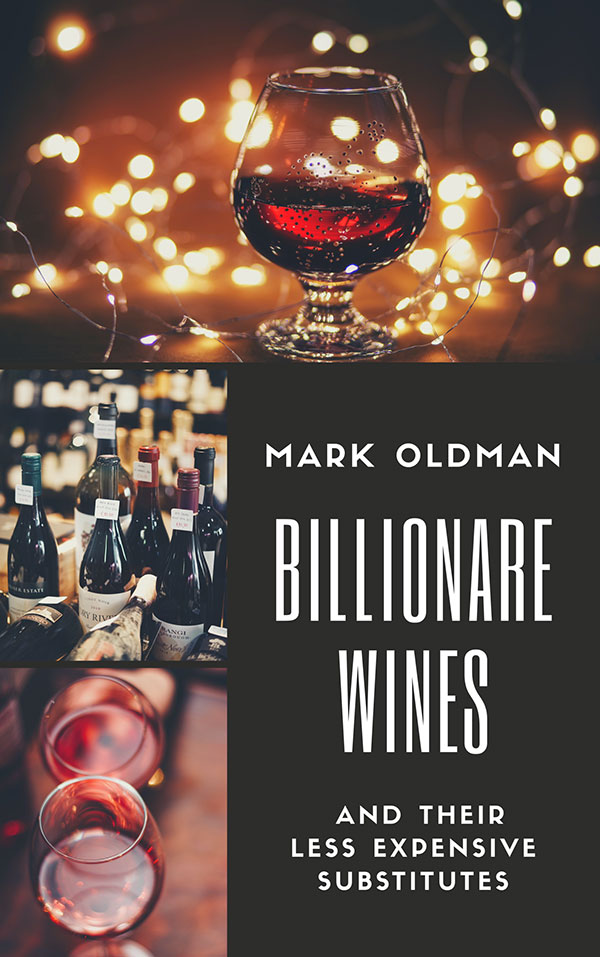
Georgie Lewis
Can a white be sexy?” Not the Pinot Grigio, according to Mark Oldman, which he describes as “like experiencing an IKEA rug, Ben Stein’s voice, or a dose of Paxil: neutral, monotone and devoid of highs.” However, the white wines from France’s Burgundy region certainly get his blood racing: “They’re full-bodied, often with a soft, voluptuous texture, but they don’t seem leaden because of the vibrant current of acidity that runs throughout them’.the best examples have an enduring aftertaste resonating on your palate like the sumptuous beats of Ravel’s Bolero.”
Oldman likes his metaphors, as do many wine writers. After all, the criticism of wine is well-stocked with language used to describe a wine’s taste or “nose.” Mown lawns, strawberries, lychees, and leather are just some of the descriptive terms that are used with regularity. However, I’ve not often heard a wine connoisseur cheerfully nicknaming White Zinfandel as “The Bee Gees of Wine” or Australian Shiraz as “the people-pleasing ‘Plush Ripey.'”
In a style as breezy and witty as it is informative, Oldman’s Guide to Outsmarting Wine is the essential guide for those who enjoy a tipple but don’t spend their weekends seeking out the most obscure vineyards. Not patronizing in the least, Oldman jokes his way through knowledgeable descriptions of grape varieties and wine regions like a good friend telling you about his favorite hobby.
And, as the above quote attests (he nicknames Pinot Grigio as the “Italian ‘Safety Blanket'” by the way), he doesn’t pull his punches. He is also quick to dismiss wine snob behavior, such as analyzing wine’s “legs,” which is the practice of looking at the film that runs down the inside of your glass after swirling it. Indicative of little more than whether the wine is full bodied or not, the practice is now considered an unreliable indicator of quality. He is much more concerned about appearance, aroma, and taste. As he writes, “Let’s not kid ourselves here — the smell might be mission control, but the taste is the money shot — the real payoff.”
And wow — did you know that only about two percent of the world’s wine becomes more pleasurable and interesting with bottle years? Two percent! So much for tucking away those eight dollar wines in the basement with some sort of sleeping beauty intention. More dust does not a miracle make. The author even recommends buying wine at Costco, and gossips that insiders tell him the Scottsdale, Arizona, and Seattle, Washington, Costcos have the best stocked shelves.
While debunking some myths, such as the ageability of most wines and the importance of “vintage years” (which are becoming less important, especially in new world regions) he also provides masses of useful information for amateurs and wine-enthusiasts alike. His playful manner, using funny anecdotes and metaphors to get his point across, is appealing to even the casual reader. On decanting a young, tannin-heavy red he writes, “Think of decanting for aeration like an NHL penalty box: after sitting out for a period of time, the wine will behave better.”
Now I realize that Oldman’s style may not appeal to all. The book is marketed to the thirty and forty-somethings, and certainly is aimed at those who want value for their money and some confidence with their purchasing power. The success of the movie Sideways has generated a lot of new interest in the art of wine tasting, and this book also perfectly captures the light-hearted spirit (and accessibility) of that indie award-winner. Far too often I would like to know more about wine (and I do enjoy it so!) but feel myself reddening around wine stewards, and going back to the same old standbys (“Merlot, anyone?”) or grabbing those specials with generic shelf-talkers designed to move my local supermarket’s excess stock of bargain-bin reds.
Vivid and useful check lists accompany all pages with quick run-downs of additional information. Included in these are “Mark’s Picks,” which are the producers for particular wine types — usually broken down into under and over $20 and American and non-American producers – as well as foods that go best with different wines. He has a label decoder to let you quickly ascertain whether the wine’s name refers to the grape (such as Dolcetto and Barbera) or a region (like Beaujolais — which was news to me, embarrassingly enough). I was delighted that he dedicated a whole section on one of my personal favorites — the New Zealand Sauvignon Blanc — along with other lesser known varietals which are sure to please and impress. He even has a pronunciation guide so all your research won’t go to waste when you sit down with the boss for lunch and order the Montrachet.
I’ve covered only a portion of the good stuff you find in this guide. I love it and will refer back to it endlessly. It is easy to use and loads of fun, and aimed at people who want to enjoy wine and get the best wine for their money. Just take a tip from me: if you are buying this as a gift, give one to yourself first.


